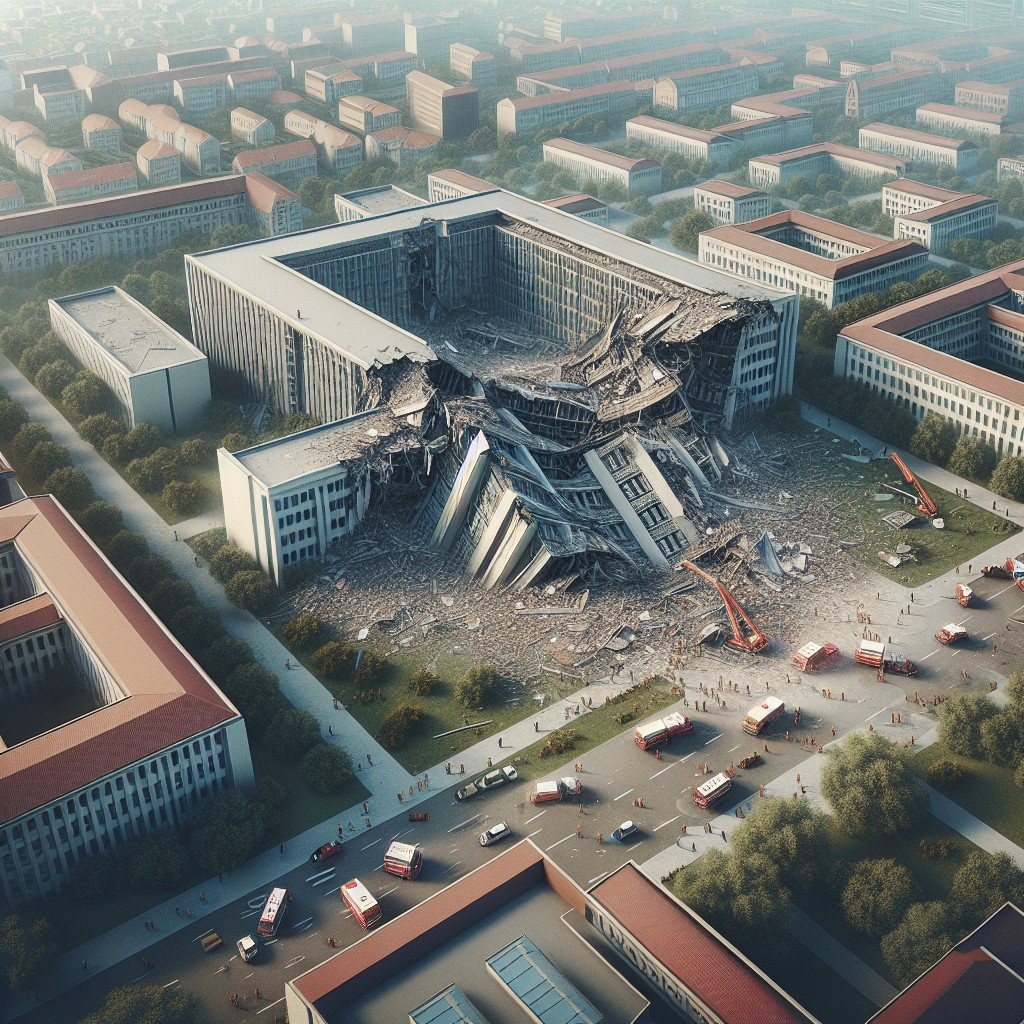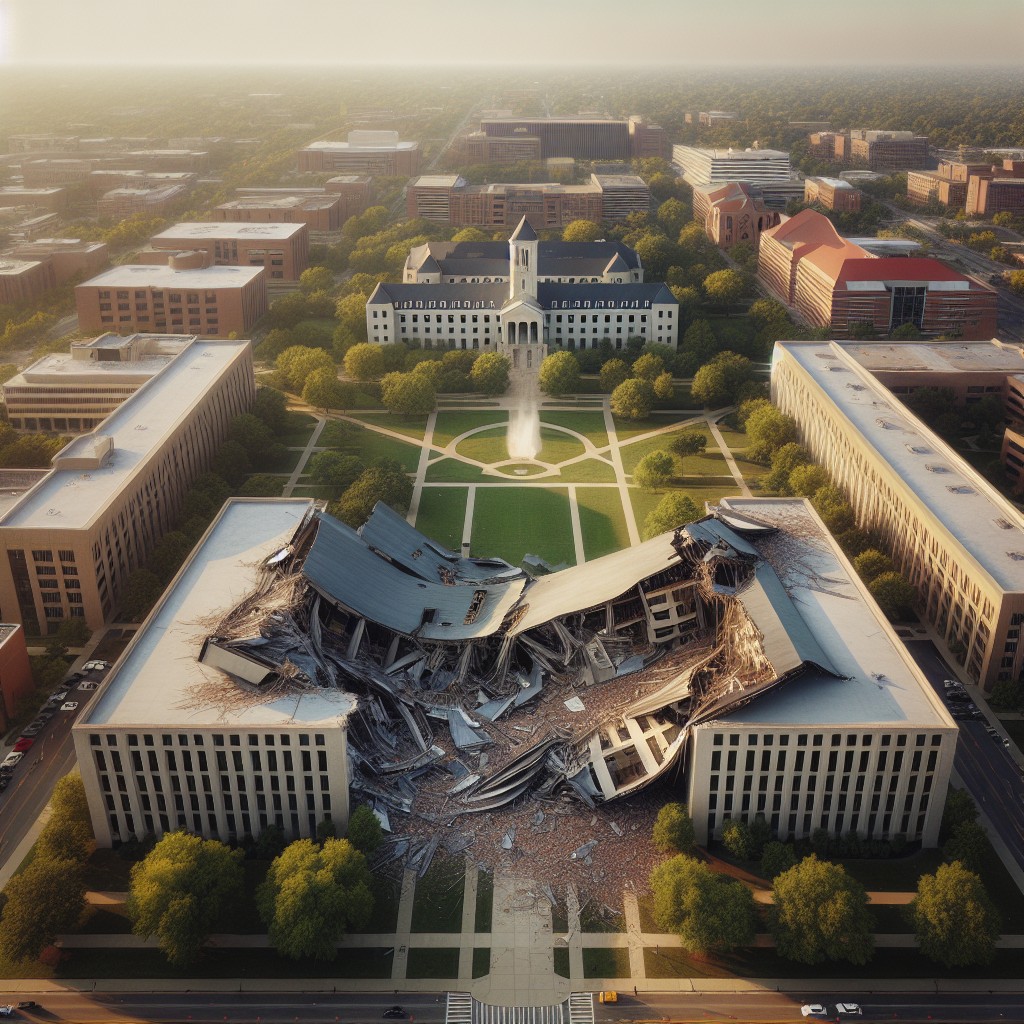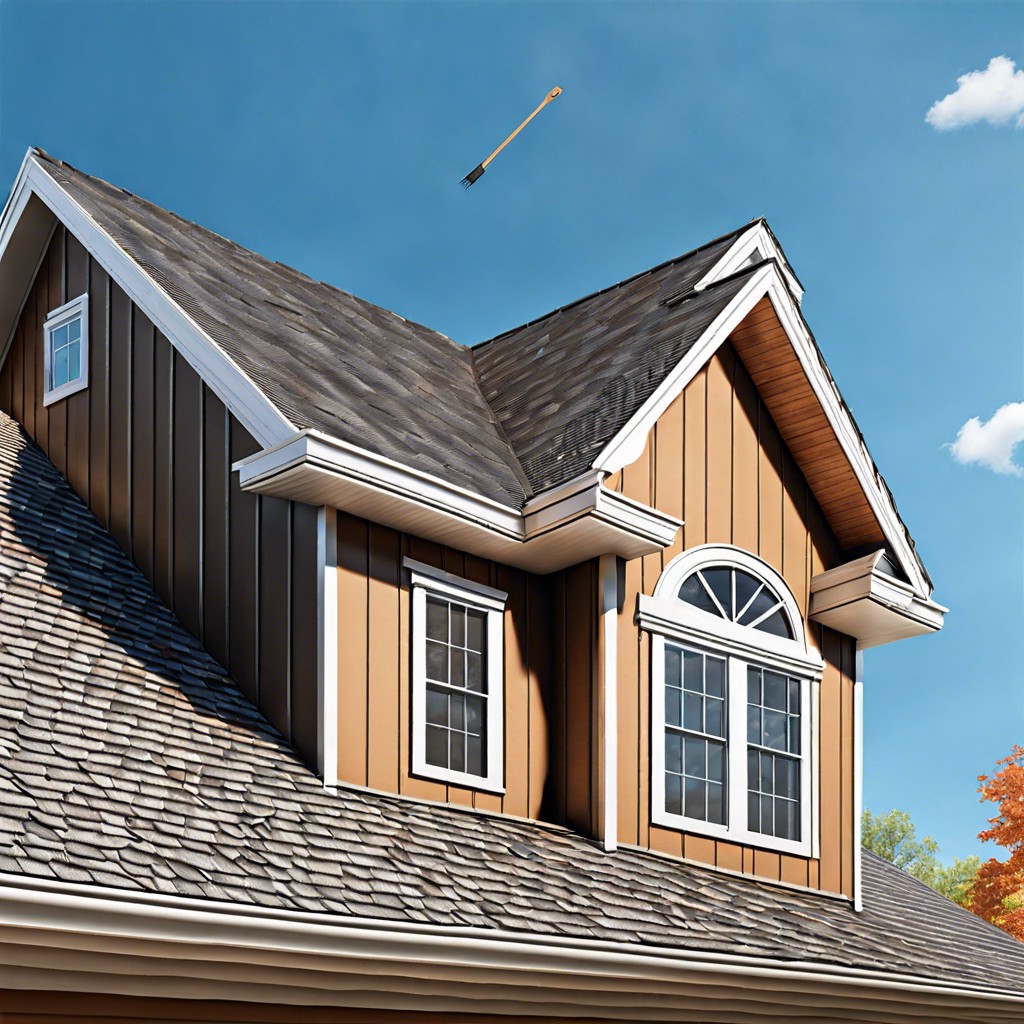Last updated on
A shocking incident, the Ohio state roof collapse has raised questions because of the complex factors that contributed to its occurrence, sparking a need for a rigorous analysis of the causes behind the collapse.
In an unexpected turn of events, a roof collapse at an Ohio State University building has heightened safety concerns across campus. Quick actions by emergency responders mitigated the situation, resulting in no loss of life and only minor injuries.
The incident, which involved a multifunctional facility, has caused significant disruption to university operations and affected the local community. While the exact causes are yet to be fully determined, preliminary speculations point towards structural deficiencies, weather-related stress, and potentially insufficient maintenance practices.
This article delves into the ramifications of the collapse, explores the possible causes, and follows the investigations that will reshape future safety measures and guide the building’s reconstruction. Stay informed about this critical issue and the comprehensive efforts to bolster campus safety.
Key takeaways:
- Roof collapse at Ohio State prompts safety concerns
- Immediate response actions ensure no fatalities, minor injuries reported
- Multifunctional building’s collapse disrupts university operations and community
- Possible causes include structural defects, weather stress, inadequate maintenance
- Ongoing investigations to inform safety protocols and reconstruction efforts
Overview of Ohio State Roof Collapse Incident

In a shocking turn of events, a section of roof at an Ohio State facility caved in, prompting immediate emergency responses. This unforeseen incident raises concerns about structural integrity, the adequacy of building maintenance, and the potential need for more stringent safety regulations.
Key points of interest surrounding the collapse include examining the age of the building, recent weather conditions that may have contributed to the structural failure, and the last time the building underwent a safety inspection.
Investigators will likely scrutinize the roof’s materials and design to determine if they met the state’s building code requirements. The collapse serves as a stark reminder of the importance of regular building assessments to ensure public safety.
Date and Location of the Roof Collapse

The incident occurred on the brisk morning of February 18, when winter’s grip still held firm over the state. It took place at Ohio Stadium, often affectionately referred to as “The Horseshoe,” a landmark sports arena nestled on the campus of Ohio State University in Columbus.
As a central hub for athletic events and university functions, the unexpected collapse raised immediate concerns regarding safety and structural integrity. This was not an isolated building on the fringes of the city but one at the heart of a bustling university life, frequented by students, staff, and visitors alike.
The timing of the collapse, fortunately, meant that the area was not as crowded as it might have been during scheduled events, which typically draw large crowds.
Building Type and Function Affected By the Collapse
The structure in question was part of the university’s expansive campus and served dual roles as an athletic facility and a storage area. Designed to support the athletic department, the space housed equipment and provided a venue for indoor sports activities, which made it a vital component for various university programs.
The functionality of the building extended to administrative operations, as it included office space for staff. Due to its multifaceted use, the collapse significantly disrupted both athletic events and administrative functions, highlighting the facility’s importance to daily university operations.
Immediate Response Actions Taken
Upon the collapse, first responders were dispatched quickly to the scene, ensuring rapid evacuation and securing the perimeter to prevent further injuries.
Rescue teams meticulously searched through the debris for any trapped individuals, while medical personnel provided immediate aid.
Emergency service units collaborated with local law enforcement to manage traffic and public safety concerns, emphasizing the urgency of the situation.
The university and building officials temporarily closed surrounding areas to facilitate investigation and cleanup efforts.
Concurrently, utility companies were alerted to shut off gas, electricity, and water to the site to avoid additional hazards.
Reported Injuries or Fatalities
Fortunately, no fatalities occurred as a result of the roof collapse. However, there were reports of minor injuries among those who were inside the building at the time of the incident.
Emergency services responded promptly, ensuring that everyone was safely evacuated and those injured received medical attention. The swift action of first responders played a crucial role in preventing any further harm to individuals in the vicinity.
Following the incident, counseling and support services have been made available to those affected, emphasizing the community’s commitment to recovery and mental well-being.
Impact On Local Community and Ohio State Operations
The collapse sent ripples through the surrounding area, disrupting the daily flow of life and activities. With sections of the building deemed unsafe, classes and university events scheduled in the affected facilities were promptly canceled or relocated, causing a temporary reshuffle in the academic calendar.
Local businesses experienced a dip in foot traffic due to the nearby construction and investigation, with some facing a temporary decline in revenue. Residents in proximity to the site were faced with road closures and increased noise from emergency response teams and ongoing repair efforts.
The university community came together to support the displaced students and faculty, showcasing resilience in the face of adversity. Meanwhile, university operations faced the challenge of maintaining a safe environment while minimizing disruptions to the educational process.
Possible Causes of the Roof Collapse
Structural defects may have compromised the roof’s integrity long before the incident. These defects could range from design flaws to substandard construction materials or methods.
Weather-related stress, particularly heavy snowfall or ice accumulation, can exceed the load capacity of a roof, leading to collapse. Age-related wear and tear is another potential factor; older roofs may not meet current building codes or may have deteriorated components.
Lastly, inadequate maintenance can lead to neglected repairs, corrosion, and weakening of the structural elements, making the roof more susceptible to failure. Investigations will likely look into these areas to determine the root cause.
Safety Inspections and Building Codes in Relation to the Collapse
In the wake of the collapse, attention quickly focused on safety inspections and adherence to building codes. Regular safety inspections are designed to identify potential structural issues before they lead to a failure, with the frequency and scope dictated by local regulations. Building codes, meanwhile, establish minimum requirements for design, construction, and maintenance to ensure the safety and health of occupants. Compliance with these codes is mandatory, and any modifications or repairs to structures typically require a review to ensure they meet the updated standards.
As the investigation unfolds, examiners will assess if the most recent inspections were conducted according to schedule and if the findings were appropriately actioned. They will also evaluate whether the building codes in place were sufficient and current with best practices in the industry.
Ohio State’s Official Statement On the Incident
Following the collapse, Ohio State representatives promptly disseminated a statement to clarify the situation and allay community concerns. Key points of the statement included:
- Acknowledgment of the incident and expression of gratitude that there were no serious injuries reported.
- Assurance of full cooperation with local authorities and emergency services.
- Confirmation that an in-depth investigation is underway to determine the cause.
- Details about the immediate steps taken to secure the site for safety.
- Directive to the Ohio State community regarding access restrictions to the affected area.
- Information on support services available to those impacted by the event.
- Commitment to transparent communication with the public as more details emerge.
Ongoing Investigations Into the Roof Collapse
Following the calamitous event, a multi-agency investigation began to determine the precise factors that led to the structural failure. Experts in engineering and safety standards converged on the scene to collect data and analyze debris. Their primary focus areas include:
- Structural Integrity Assessment: Evaluating the condition of the remaining structure to ascertain if similar weaknesses exist.
- Historical Analysis: Investigating past inspection records to check for any overlooked issues or noncompliance with maintenance requirements.
- Material Examination: Testing materials used in the roof construction to ensure they met the specifications and standards in place at the time of construction.
- Environmental Considerations: Looking into weather conditions and other external factors that could have contributed to the collapse.
- Design Review: Scrutinizing the architectural design to identify potential design flaws or errors in the construction plans.
These points form the crux of the ongoing investigative efforts, with findings expected to inform future building safety protocols and contribute to more resilient construction practices.
Efforts Towards Repair and Reconstruction
Following the collapse, reconstruction efforts mobilized swiftly to ensure safety and restore functionality. These efforts included:
- Securing the site to prevent further damage and ensure public safety.
- Assessment of structural integrity by qualified engineers to determine the extent of the damage.
- Collaboration with insurance companies for claims processing and financial planning for repairs.
- Hiring reputable contractors with experience in large-scale roofing projects.
- Drafting a timeline for repairs to minimize disruption to daily activities.
- Selection of durable materials and modern roofing techniques to fortify against future incidents.
- Communication with affected parties regarding projected milestones and expected completion dates.
The focus remains on rebuilding with resilience, adhering strictly to updated building codes that may result from investigations into the collapse.
Safety Precautions for Future Prevention
In the aftermath of structural failures, stringent measures are pivotal to safeguarding lives and property. Enhanced building inspections, particularly for older structures, can identify potential weaknesses before they result in catastrophe. Adherence to updated building codes, which evolve to reflect the lessons learned from incidents such as the Ohio State roof collapse, is essential.
Regular maintenance is also critical. Roofs should be inspected biannually and after significant weather events. This ensures the integrity of roofing materials and structural supports. Installation of monitoring technology, such as sensors to detect excessive load or structural strain, offers real-time alerts to prevent future failures.
Education plays a significant role. Building owners, managers, and occupants must be informed about the importance of reporting signs of damage or deterioration. Training for emergency response and evacuation procedures can minimize the impact should a collapse occur.
Collaboration between state authorities, construction experts, and academic researchers can foster innovation in roofing materials and design. Investing in research and development may lead to advancements that improve roof resilience against extreme weather and long-term wear.
Implementing these precautions helps to create an environment of proactive safety management, reducing the likelihood of similar events and fostering confidence in structural integrity.
Resources for Affected Individuals and Businesses
In the wake of the collapse, several avenues are available to support those impacted:
- Emergency Assistance: Local Red Cross and emergency management agencies offer immediate aid with shelter, food, and medical care.
- Insurance Claims: Property owners should promptly contact their insurance providers to report damage and begin the claims process.
- Small Business Support: The Small Business Administration (SBA) can provide disaster recovery loans to qualifying businesses experiencing interruptions.
- Counseling Services: Emotional support is available through mental health hotlines and local counseling centers, recognizing the incident’s potential psychological impact.
- Legal Aid: Free or low-cost legal services help navigate insurance, liability issues, and potential compensation.
- Building Assessment: Professional structural engineers and roofing experts are on hand to inspect other at-risk structures, ensuring safety and compliance.
- Community Funds: Crowdfunding and local charity initiatives have been set up to help those who suffered losses.
- State and Federal Resources: Information about disaster recovery and additional resources can be accessed through Ohio’s Emergency Management Agency website and FEMA.
Implications for Roofing Standards and Practices in Ohio
The collapse has prompted a rigorous examination of existing roofing protocols. Here are several considerations being evaluated:
- Re-evaluation of Load Capacities: Ensuring roofs can withstand the weight of snow, equipment, and maintenance operations.
- Inspection Timeframes: Assessing whether more frequent inspections may prevent future incidents.
- Material Quality Checks: Verifying the use of materials that meet the highest safety standards and are suitable for Ohio’s climate.
- Installation and Repair Scrutiny: Enhancing quality control during installation and repairs to bolster overall structural integrity.
- Training and Certification: Strengthening requirements for professionals responsible for roof construction and maintenance.
- Emergency Preparedness: Developing robust emergency response plans for similar incidents, potentially reducing response times and impact.
These considerations could lead to updated regulations that prioritize public safety and reinforce the resilience of buildings in Ohio.




